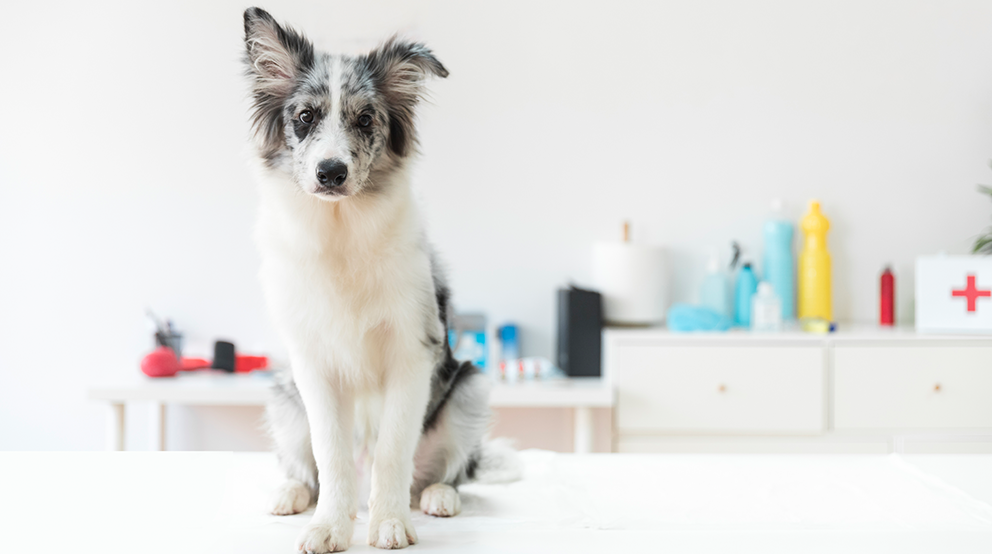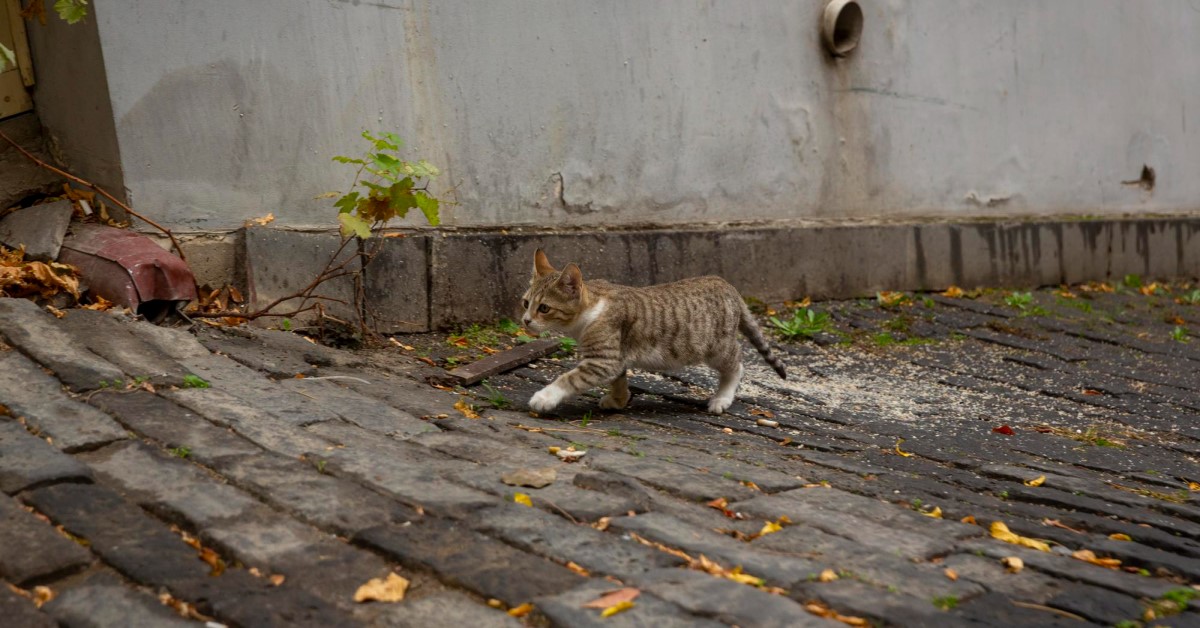Essential Items to Have in Your Pet’s Emergency Pack
Administering first aid care to your beloved companion in an emergency can be stressful, but it may save your pet’s life. While your own first aid kit likely has many of the necessary items for a pet first aid kit, additional products are needed to ensure you’re fully prepared for any scenario.

We love our dogs and cats for their curious nature and desire to explore everything under their noses. However, that zest for investigating can lead your inquisitive pal into a world of trouble and toxins. Pets are prone to getting into mischief, which may lead to a scrape, cut, allergic reaction, or poisoning. Be prepared for any situation by creating a pet first aid kit to pack with your pet’s overall emergency gear.
Pet First Aid Kit Essentials
Administering first aid care to your beloved companion in an emergency can be stressful, but it may save your pet’s life. While your own first aid kit likely has many of the necessary items for a pet first aid kit, additional products are needed to ensure you’re fully prepared for any scenario. When putting together your pet’s first aid kit, be sure to pack it with the following essentials:
- Gauze
- Nonstick bandages
- Clean cloths or towels
- Adhesive bandage tape
- Non-adhesive vet wrap
- Bandage scissors
- Tweezers or hemostats
- Milk of magnesia
- Activated charcoal
- Dawn dish soap
- Fresh 3% hydrogen peroxide
- Rubbing alcohol
- Digital thermometer
- Eye dropper or large syringe without needle
- Sterile saline eye wash
- Wound flush
- Diphenhydramine
- Styptic powder
- Muzzle
Of course, you can always purchase a premade pet first aid kit, but creating your own allows you to customize it to fit your furry pal. Include medications, such as Benedryl, at the correct dosage for your pet’s size, and items specific for your area, like a Mylar blanket for cold climates or tweezers to remove cactus needles.
Once you’ve gathered all the items needed for your pet’s first aid kit, you’ll be able to bandage wounds, induce vomiting, treat allergic reactions, stop bleeding, and manage toxin exposure. However, make sure you include a secret weapon in your pet’s first aid kit—a list of emergency contact numbers. Include the information for the nearest veterinary emergency hospital, along with your regular veterinarian, plus the number for the ASPCA’s Animal Poison Control Center.
How to Put Together an Emergency Pack for Your Pet
Although you hope to never need an emergency plan for your pet or your family, preparing for an emergency situation is critical for a smooth evacuation in the event of a natural or man-made disaster. A pet first aid kit is an essential item, but there are other necessities to store in your furry pal’s emergency pack to ensure an easy getaway during a house fire, tornado, hurricane, or other catastrophe.
When creating your pet’s emergency pack, store all items in a waterproof container, such as a large plastic tote. Fill the tote with the following essential items:
- Pet first aid kit
- Two-week supply of daily medications
- Additional doses of heartworm, flea, and tick prevention
- Two-week supply of food and water
- Can opener
- Food and water dishes
- Litter and disposable boxes, such as foil roasting pans
- Treats
- Toys
- Bedding
- Spare leash and collar or harness
- Microchip registration information
- Additional ID tags attached to collar
- Vaccination records and medical history
Place a spare crate or carrier next to your pet’s emergency pack to ensure you have an easy-to-grab crate to snatch up as you hurry out of your house. Don’t forget to swap out your pet’s medicine, food, and water for fresh items. Keep a close eye on expiration dates and rotate products at a minimum of every three months to ensure continued freshness.
Emergency Situations that Require First Aid for Your Pet
If you find your pet in a situation that requires first aid, don’t panic. Take a deep, calming breath, grab your first aid kit, and follow the steps outlined in the common emergency situations below.
POISONING AND TOXIN EXPOSURE
Pets are well-known for their penchant for discovering hazardous items, such as chocolate, rodenticides, antifreeze, lilies, and a variety of other household, garden, and garage products that can lead to toxicity. If your pet has encountered a toxic object, read the label and follow the instructions for human exposure to the product. For example, if the product states to wash your skin with soap and water if you are exposed, wash your pet to remove the toxin. However, if your pet is having seizures, difficulty breathing, loses consciousness, or consumed a known toxic item, contact your veterinarian or an animal poison control hotline immediately for assistance.
BURNS
If your furry pal gets too close to your campfire, lured by the aroma of roasting hot dogs, you may need to put your burn first aid skills into practice. Burns are incredibly painful, so it would be wise to muzzle your pet before beginning first aid care. Once your pet is muzzled, apply an ice water compress to the burned area. If the burn is caused by chemicals, flush the area with large amounts of water to dilute the chemical. Remember, your pet will require veterinary care after such an injury. Pain control will be especially important to keep your best friend comfortable while they heal.
WOUNDS
Pets can suffer from a variety of wounds, cuts, and lacerations, depending on what scrape they find themselves in. From scuffles and fights, to vehicle run-ins and adventures in the woods, cats and dogs can easily tear a gash in their skin. Most injuries will be painful, unless they are small and superficial, so muzzle your pet as a precaution before beginning first aid care. Once muzzled, assess the injury, trimming away fur with your bandage scissors if necessary. Press a clean, thick pad of gauze on the injury, applying firm, steady pressure to help form a clot. Rather than checking every few seconds to see if the bleeding has stopped, apply pressure for at least three minutes before checking to see if a clot has formed.
If the bleeding is severe and coming from an extremity, apply a tourniquet using an elastic band or gauze between the wound and body. Apply a thick, clean bandage to the wound and keep firm pressure on the injury. Loosen the tourniquet for 20 seconds every 15 to minutes as you travel to your veterinarian. Severe bleeding is a life-threatening issue that requires immediate attention. While your pet may lose a limb if the tourniquet is left on too long while rushing to your vet, it’s better to lose a limb than their life.
SEIZURES
Your pet may experience a seizure for a variety of reasons, including toxin exposure and idiopathic epilepsy. Regardless of the cause, the first aid care is the same. At the first hint of a seizure, block your pet’s access to stairs and keep your furry pal away from any objects that may cause harm by using barricades. Do not try to restrain your pet, since you may get bitten by your unaware companion. Time the seizure, recording the episode if possible for your veterinarian to examine. After the seizure has stopped, keep your pet warm, quiet, and in the dark while you contact your veterinarian.
Keep in mind that first aid is not a substitute for proper veterinary care. Rather, it is a life-saving measure meant to stabilize your pet’s condition until you can reach your veterinarian. Contact your veterinary team for help if an emergency situation occurs.
Ready to start saving money on pet wellness care?
Then take a look at Mint Wellness, the pet wellness plan that provides fast reimbursement on routine pet care. Save on vaccinations, wellness exams, preventatives, dental, and more!
Learn More


